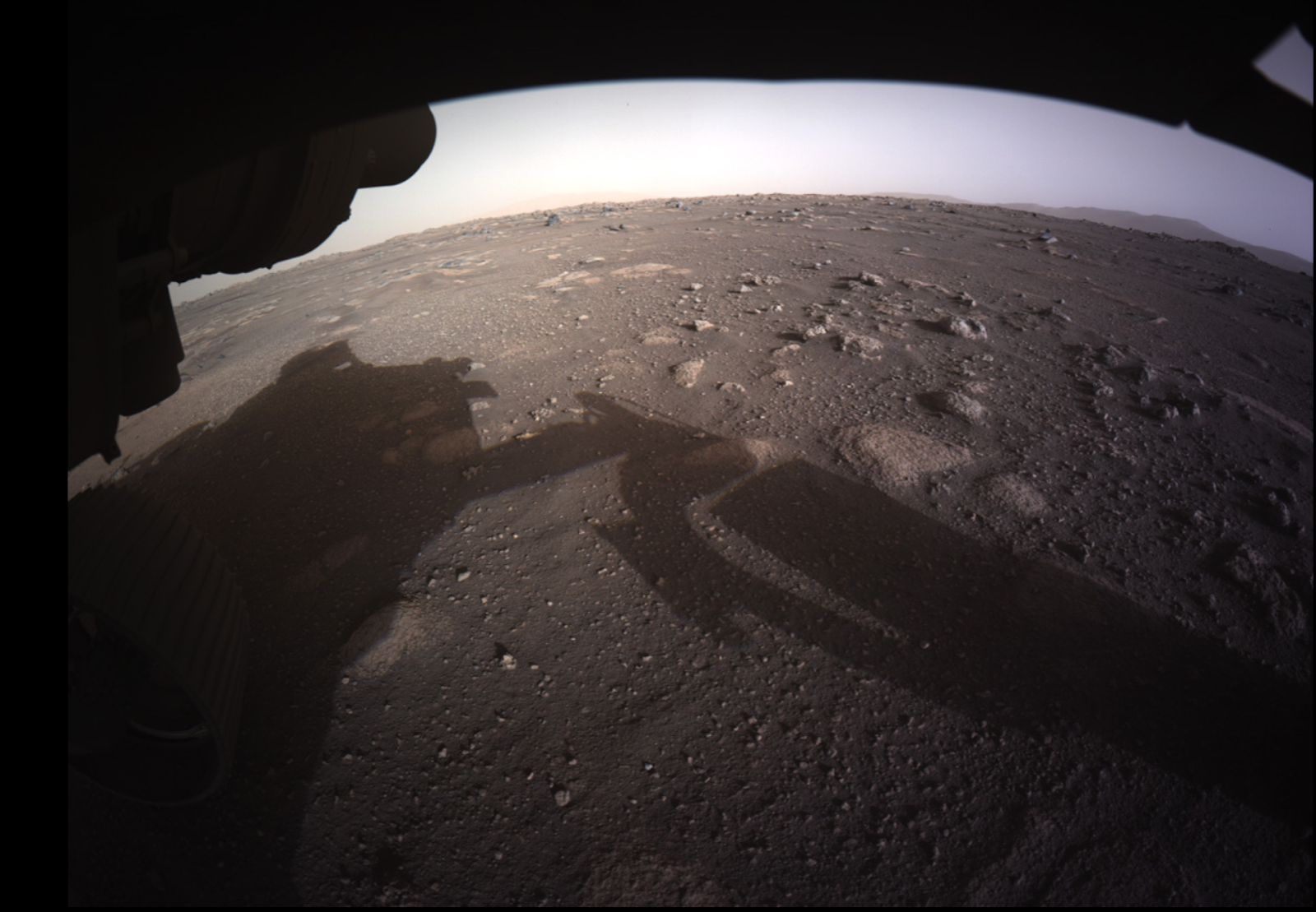Last week’s successful landing of NASA’s Perseverance rover in Jezero Crater showcased the ongoing capacity of NASA and JPL to design, build, and fly sophisticated interplanetary robotic missions. Through the drama of Entry, Descent, and Landing, and the subsequent confirmation of a healthy rover and helicopter, the global community has been shown the key role that robotic platforms have to play in the exploration of deep space.

Perspective from the descent stage during the sky-crane maneuver, with rover approximately 6m from the surface. Photo @NASA Feb 2021.
With Perseverance, NASA has delivered a highly capable rover to Mars, with major improvements over previous generations. The rover’s suite of instruments has the capacity to directly address questions in astrobiology, the groundwork for which has been decades in the making.
From November 2020, China’s Chang’e 5 mission to the lunar far side also showcased the role of increased sophistication and capability in lunar exploration. As a part of China’s lunar exploration program, Change’5 was notable for key advancements in China’s lunar science and technology.
While this generation of sophisticated robotic explorers constitutes major engineering achievements, they also hold a central role in the development of human flight profiles. In combining robust engineering, science, and technology development initiatives, they fill the role of pathfinder, paving the way for further robotic flights as well as human exploration-class missions.
In the case of Perseverance, JPL’s team has dedicated significant resources to a mission architecture designed to support future human exploration. In context, it is part of a larger program that includes missions to the Moon as a way to prepare for Mars human exploration; demonstrations of heavy landing systems, sample caching, and resource utilization are all key components of exploration-class risk management. The rover will be testing methods for producing oxygen, identifying subsurface water, improving landing techniques, and characterizing weather, dust, and other potential environmental conditions, correlating with the needs of future Mars crew. Critically, even if Perseverance finds no evidence of astrobiology, it will still be successful in demonstrating techniques for ongoing exploration.
As discussed in previous articles (for example, on the development of crew health paradigms), NASA and its partners are continuing to address key concerns for the maintenance of crew health and performance in exploration-class missions. Human research and crew training will take a central role in preparing crews for successful expeditionary spaceflight. And as we continue to develop these capabilities, robotic explorers will continue to address the technology and knowledge gaps to allow us to place humans on other planets.

First post-landing high-resolution color image from Perseverance rover. Photo @NASA Feb 2021.
Following on the success of Perseverance in landing and in beginning surface operations, we can look forward to robust science and sophisticated technology demonstrations that will support our plans for living and working on Mars.
Congratulations to NASA and its national and international partners on an incredible success!
ASP’s membership shares a mission to develop the next generation of spaceflight professionals, and in doing so, to provide the means for achievement of key milestones in human spaceflight. To support professional development in this way, ASP continues to advance a spectrum of funding facilitation and professional opportunities.
Learn more about ASP’s work here.
